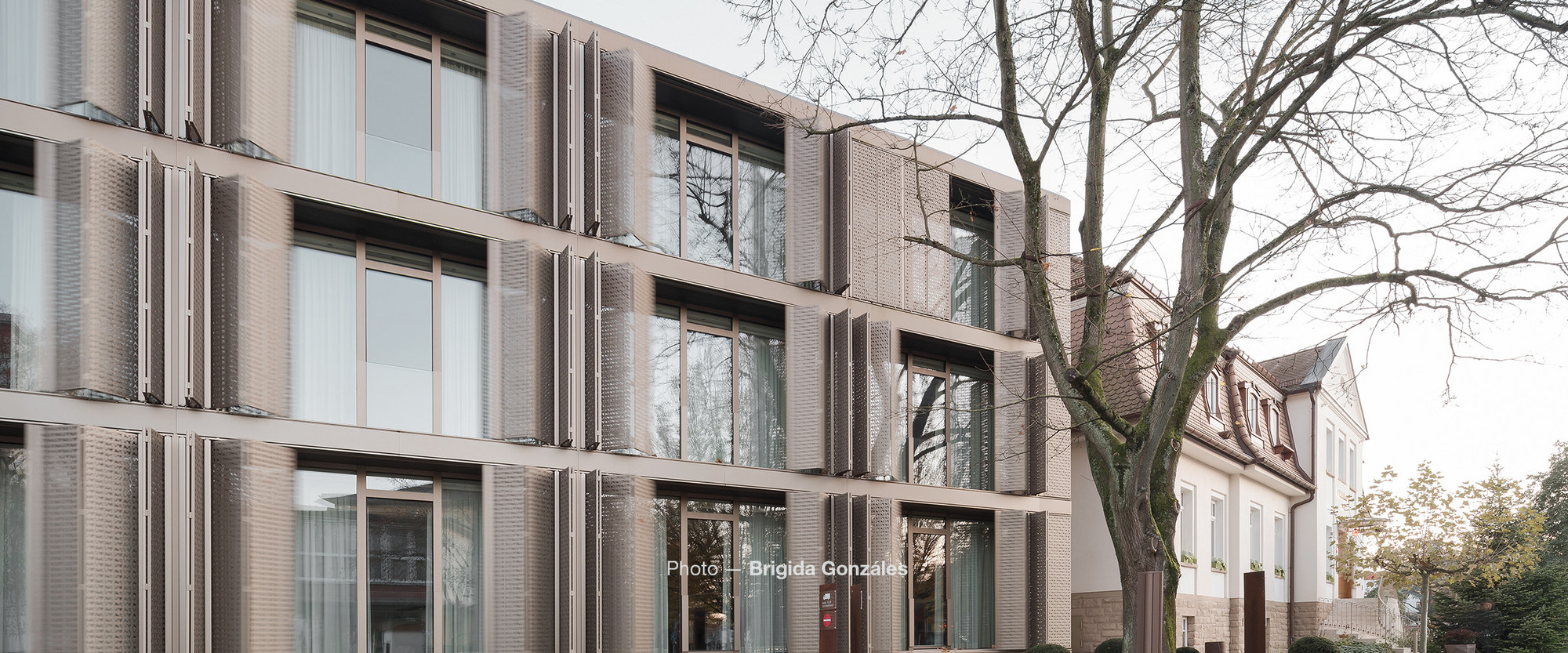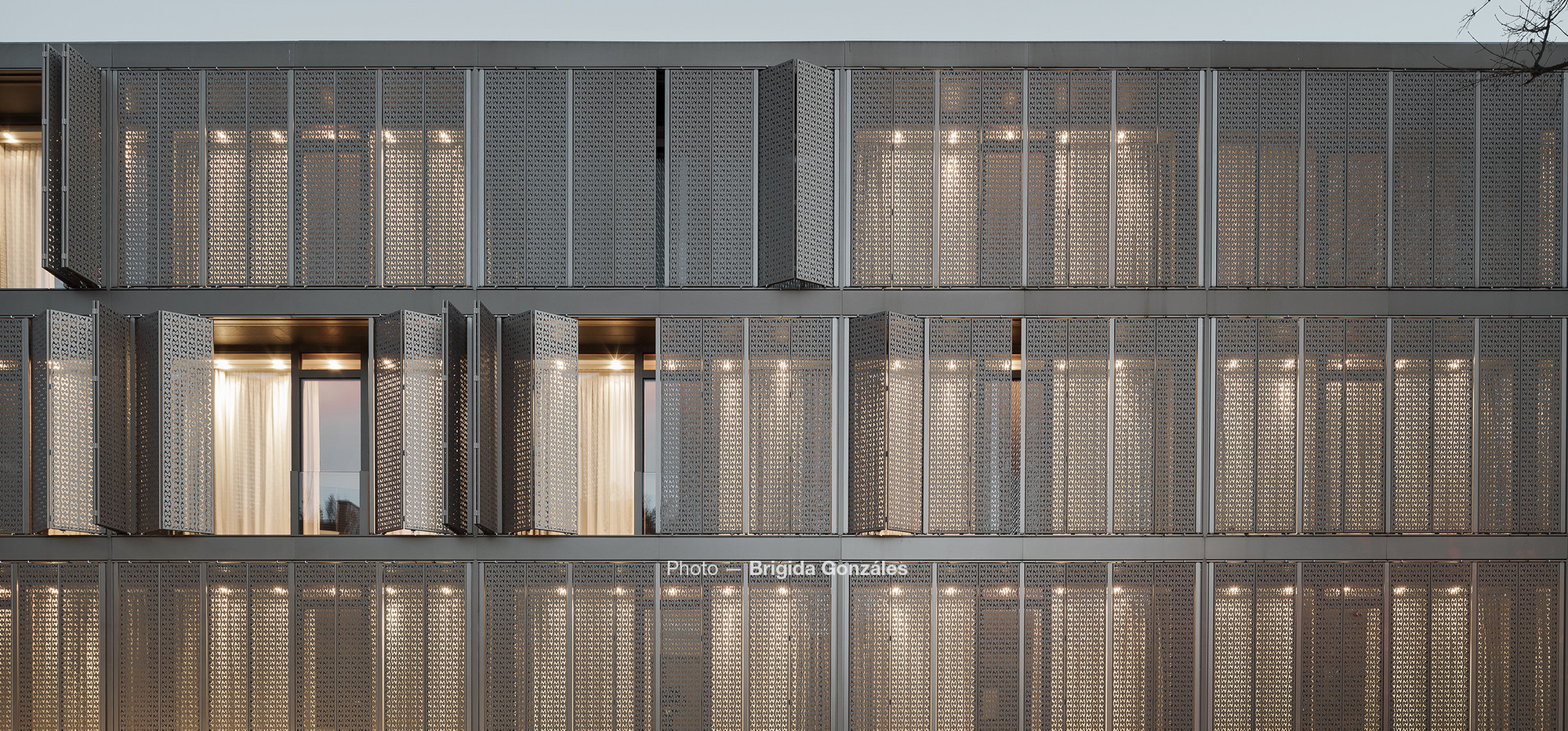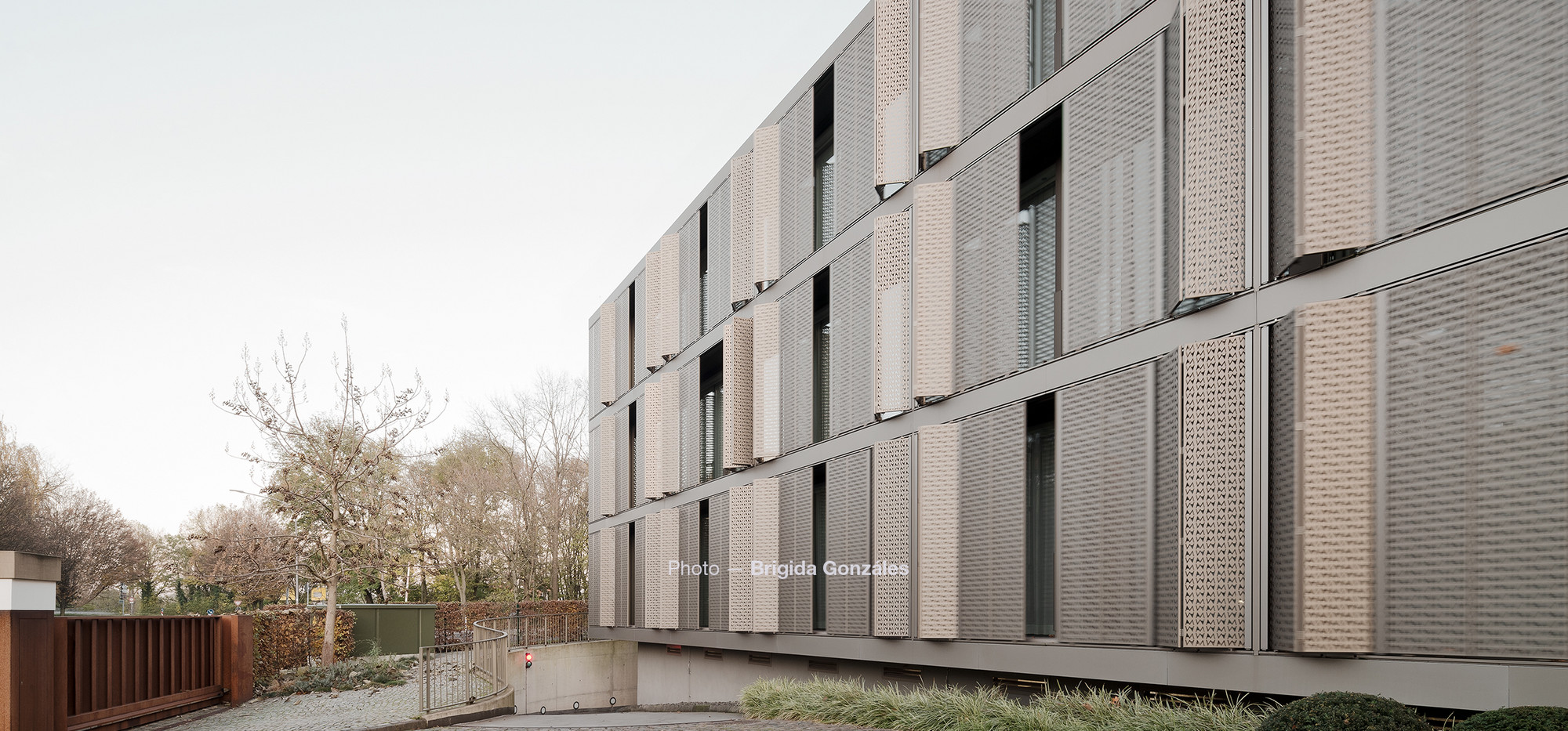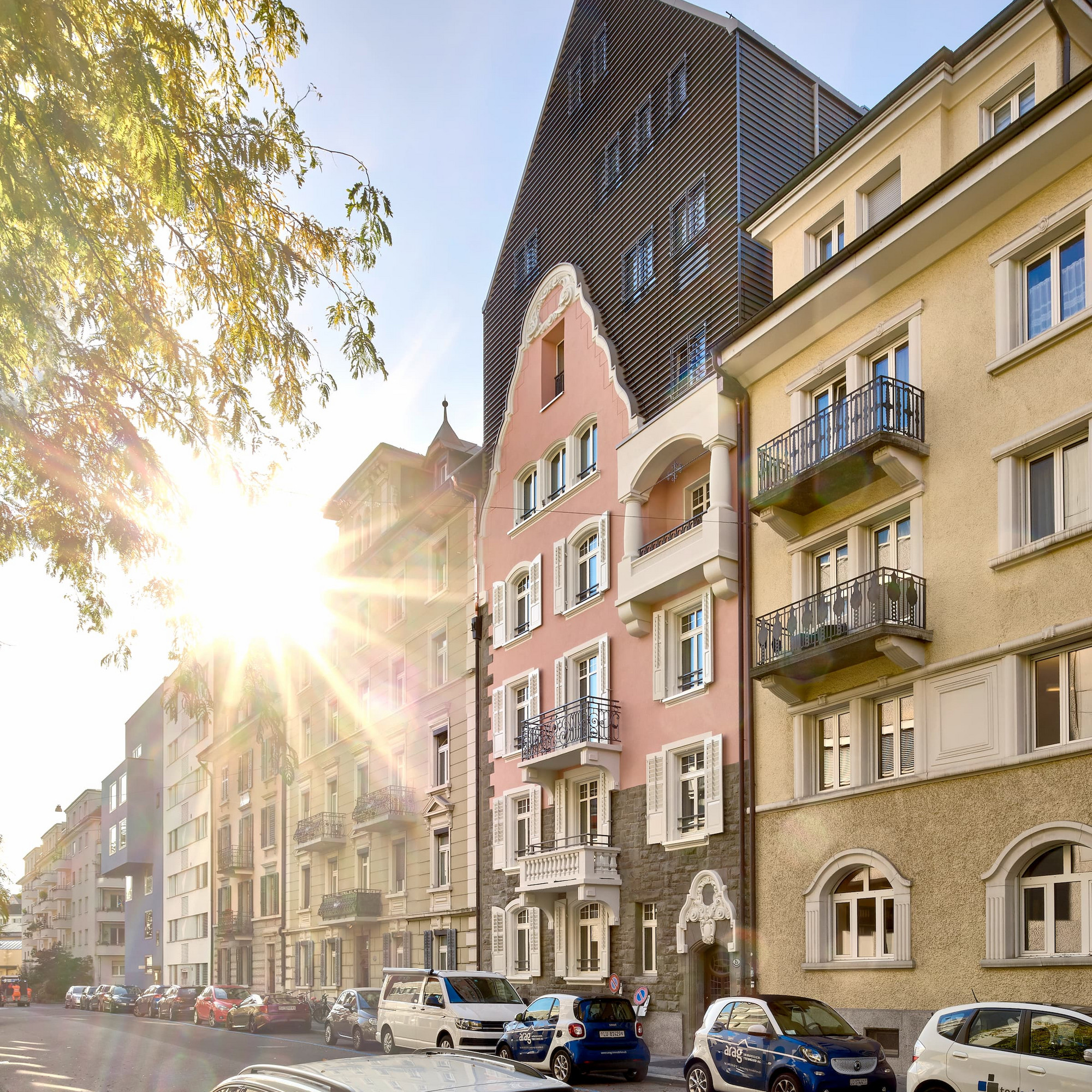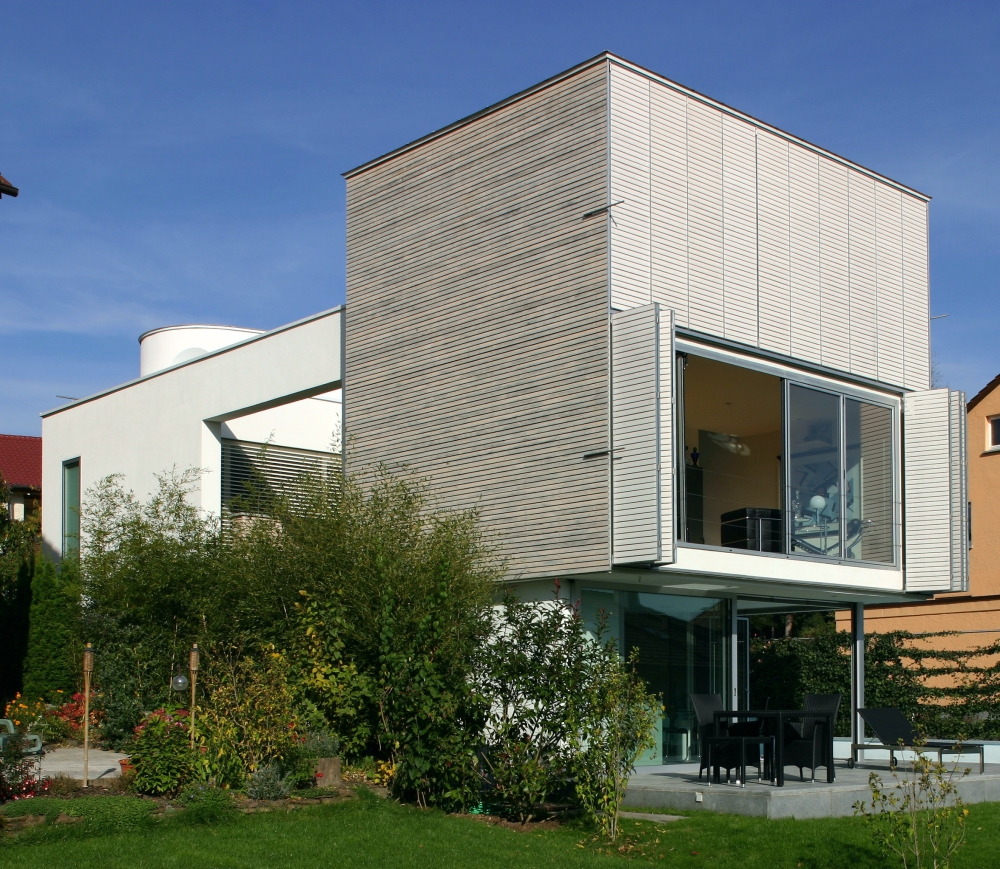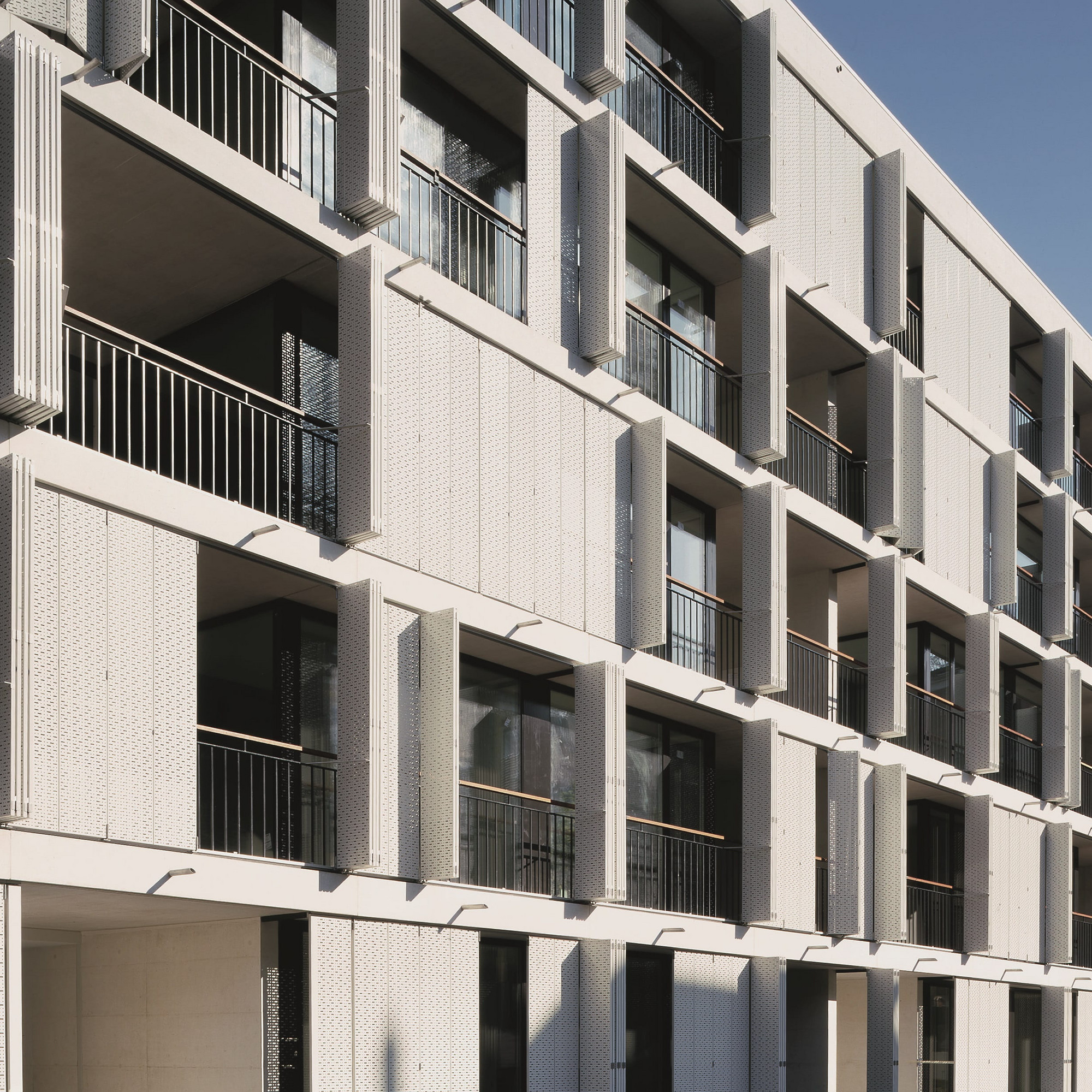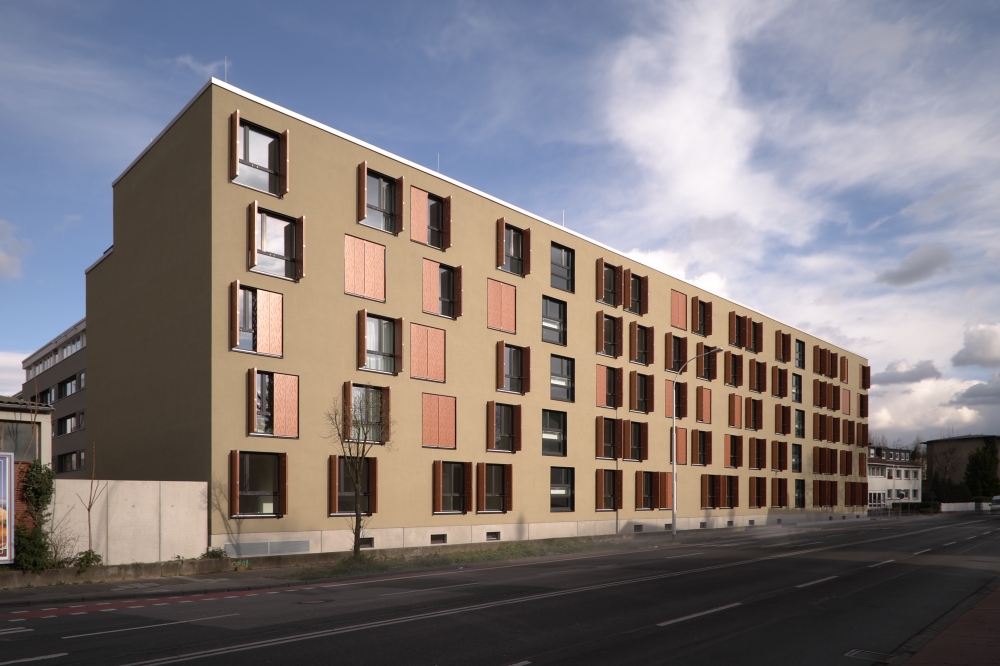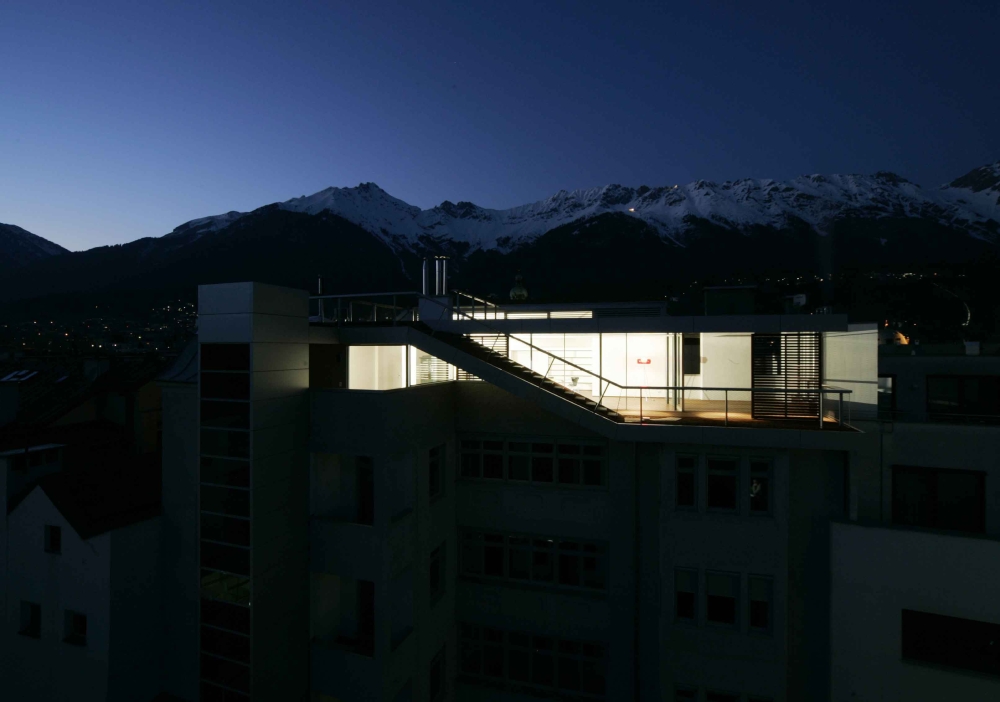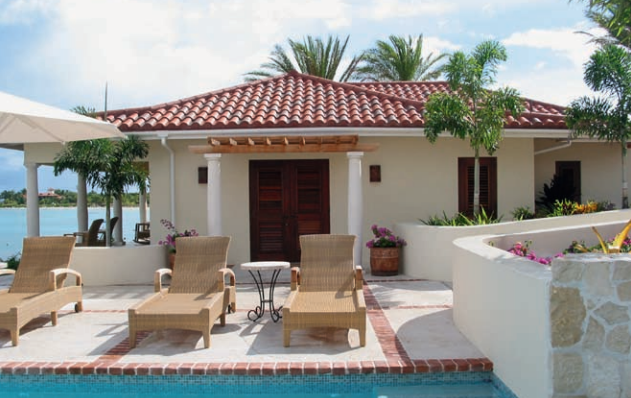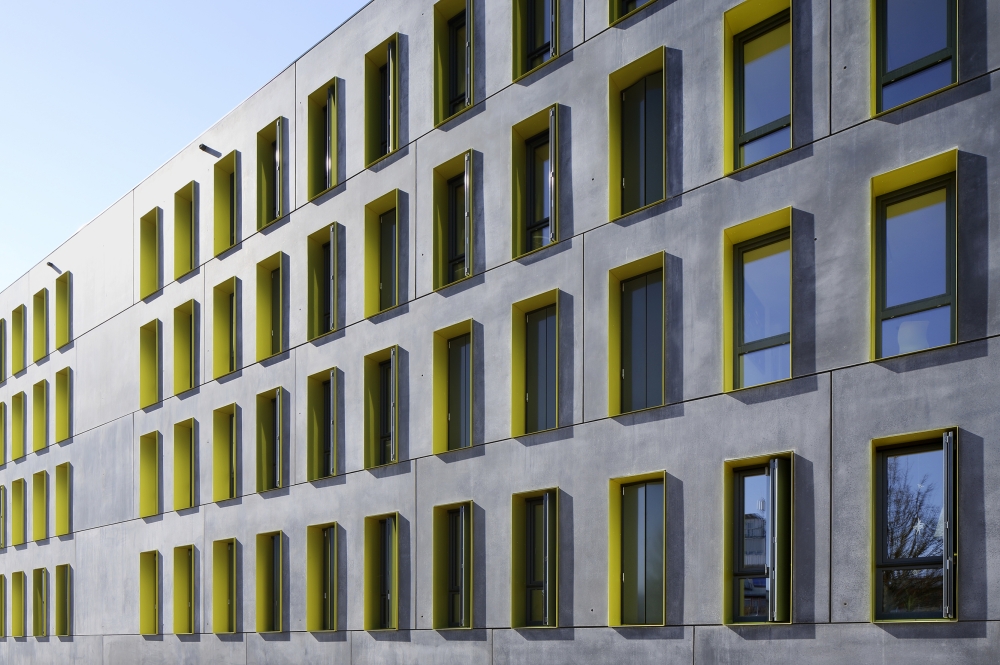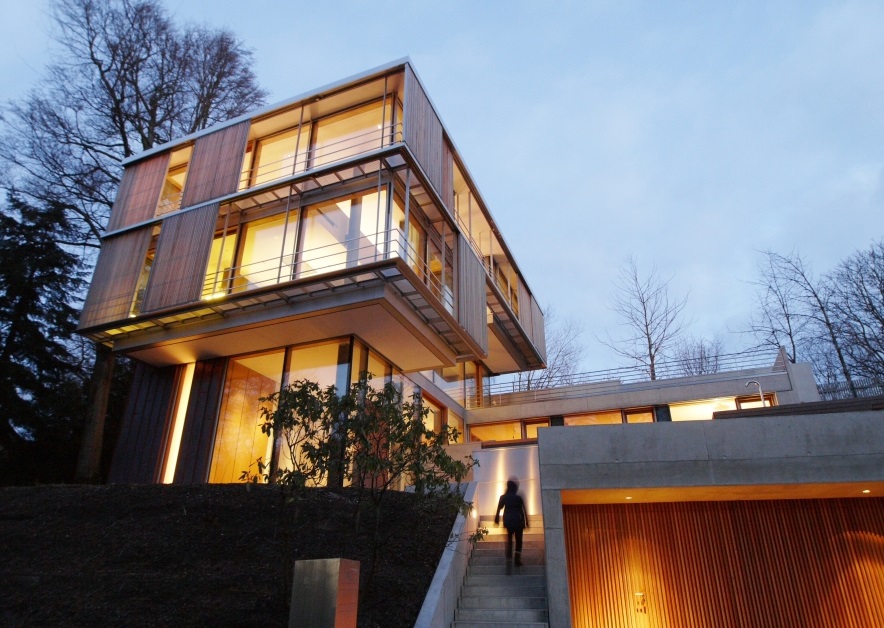“We give the facade a language”
The four-star hotel LA MAISON is one of the attractions in the small German town of Saarlouis. Not least because its facade changes several times throughout the day. For architects Christina Beaumont and Achim Gergen, founders of CBAG.Studio, successful architecture is demonstrated not least by the fact that the facade expresses the inner life of a building.
Ms. Beaumont, Mr. Gergen, according to your own statements, you want to create an “inner or performative beauty” with your architecture. Could you elaborate a little?
Christina Beaumont: Construction always involves the use of resources. It goes without saying therefore that our buildings are well constructed and sustainable. However, we don’t think that’s enough. Our buildings must be fit for the future. That means they must be able to respond to different users and their ideas. We therefore design them beyond one life cycle so they can stand the test of time and justify the cost of a building. It is that added value of the building that we call “inner or performative beauty”.
Achim Gergen: Our “Green House” in Saarlouis is a good example. The wooden building can serve as an office, a residential building, a store, a studio or a practice. It is multifunctional.
You have worked for international star architects Zaha Hadid in London and Rem Koolhaas in Rotterdam. What influences did you take away?
Christina Beaumont: We took away a great deal from both these places. But above all, the experience at OMA in Rotterdam around Rem Koolhaas had a great impact on us. Their practice resists the standardization of architecture. At the start of any project there are many parameters, including social ones, that will have an effect. This generates a kind of opulence of ideas, and it is this multi-layered approach that still feeds into our projects today.
Then you set up your own business in tranquil Saarlouis—and soon caused a sensation with the construction of the LA MAISON hotel. What are you most proud of in the “boutique hotel of the Year 2020”?
Christina Beaumont: The hotel is located in a place of great historical importance. Even though the erstwhile courthouse was not listed as a historical monument it reflects the very eventful history of the entire region. The architectural combination of old and new was a great challenge for us in this project. And we believe we found a good solution. We are happy to quote the laudation of the jury of the BDA award: “Convincingly precisely designed, the hotel enriches the historical site and radiates beyond it into the entire region”.
In addition to the rendez-vous of different eras, the bronze-colored perforated folding sliding shutters catch the observer’s eye. What gave you the idea of this changeable facade?
Achim Gergen: A hotel room always means living in a temporary fashion. It must respond to the needs of many different users and should provide the highest level of comfort. The idea of the changeable face reflects this requirement. Every guest can determine the degree of privacy or openness at the touch of a button. On top of that, he or she can change the facade structure by varying the settings.
Christina Beaumont: The facade of the LA MAISON hotel comes to life with each individual guest. It is not rigid but alive, it interacts. This has tempted us to give the facade “a language” that expresses the needs of the guests. It is therefore more than just a shell.
What do you place particular emphasis on when designing a facade?
Achim Gergen: From the very beginning, we visualize the precise construction of the facade and its material palette. This is the only way to make it visually convincing in the end. Particularly in the case of a façade that is minimalistically reduced to one material—as in the case of the LA MAISON hotel—and at the same time provides a flexible visual and solar protection, we attach the greatest importance to an almost invisible integration of the technology into the facade.
What role does facade design play in your work overall?
Christina Beaumont: Facade design is an important part of our architectural work. As its face, the facade gives a building its expression and shows its quality. It is important to us that the facade is not just reduced to a shell, but is interwoven with the interior.
How do you assess the future potential of sliding shutters?
Achim Gergen: The Covid 19 pandemic has brought into even sharper focus the fundamental question of how we want to live in our cities in the future. People want to be part of urban life and take advantage of the opportunities and cultural offerings. At the same time, they need a high-quality private retreat. Residential buildings must unite these contrasts. This is where we see enormous potential for sliding shutters. Because they allow each resident to individually set the degree of privacy and openness at any given time.
Which building would you definitely wish to do?
Christina Beaumont: Shortly after starting with our office CBAG, we won the second prize for a museum building in Laerdal, in Norway. And that would be our dream: to do a museum.
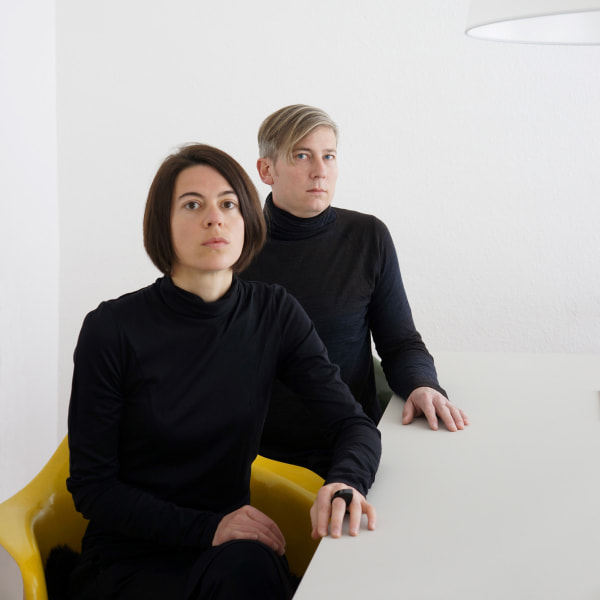
Building for the future
Christina Beaumont and Achim Gergen grew up in the Saarland and returned here after working abroad. The multi-award-winning architects love to combine the past with modernity and design buildings that respond flexibly to the needs of their users.
Impressions of Hotel LA MAISON
Reference projects
Discover new possibilities for facade design with sliding and folding sliding shutters.
